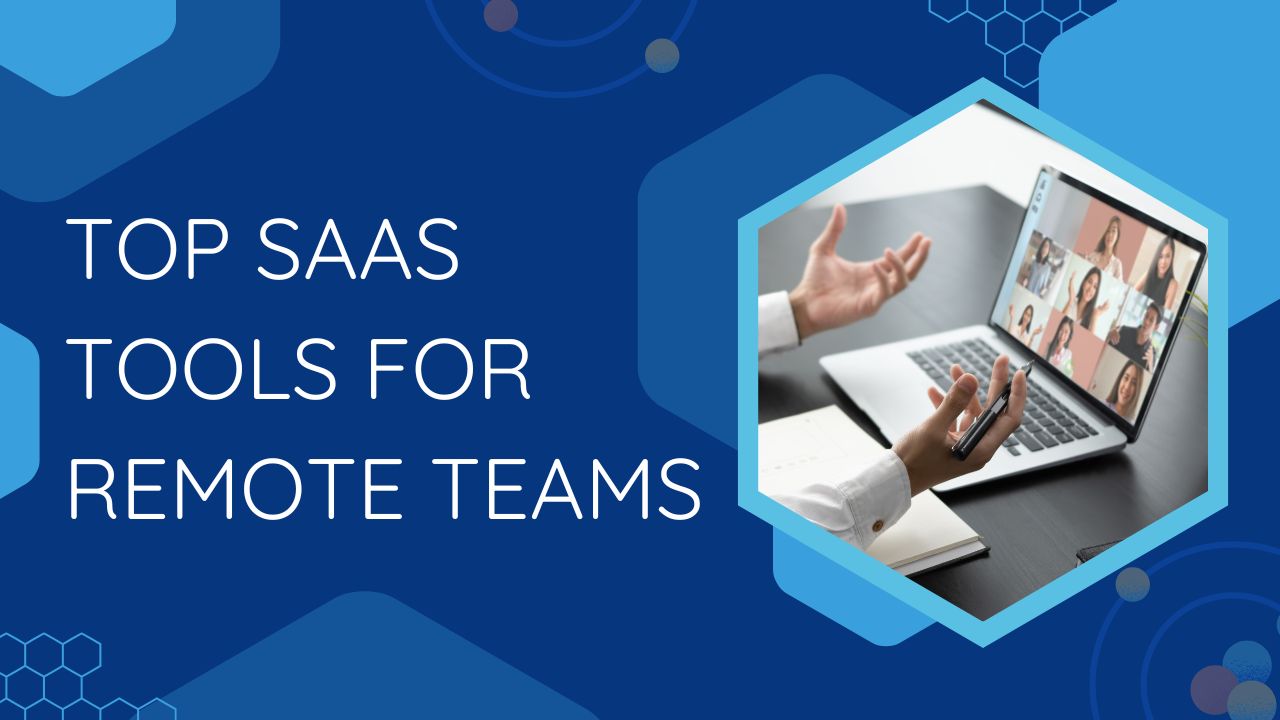Remote work isn’t going anywhere—and neither should your team’s productivity. But with endless apps promising to “revolutionize” your workflow, how do you pick the right ones?
We’ve tested the latest SaaS tools to bring you the best of the best for remote teams in 2025. Whether you need seamless communication, airtight project management, or bulletproof security, we’ve got you covered.
Why the Right SaaS Tools Make or Break Remote Teams
Working from home sounds great—until your team is drowning in Slack messages, lost in endless Google Docs, or struggling to track deadlines. The right tools don’t just help—they transform how your team operates.
Here’s what the best SaaS tools do for remote teams:
✅ Cut through the noise – No more endless email chains or missed messages.
✅ Keep projects on track – Clear tasks, deadlines, and accountability.
✅ Boost productivity – Less wasted time, more focused work.
✅ Lock down security – Protect sensitive data, even when your team is scattered across the globe.
But with so many options, where do you start? Let’s break it down.
Best Communication & Collaboration Tools
1. Slack – The Virtual Office Hub
Slack is the go-to for team messaging—think of it as your team’s digital HQ.
Why it’s a game-changer:
- Organized chats (channels for projects, departments, or even memes).
- AI-powered summaries – Get the gist of long threads instantly.
- Integrates with everything (Google Drive, Zoom, Trello—you name it).
Best for: Teams that want real-time chat without drowning in emails.
2. Google Workspace – The Swiss Army Knife of Remote Work
Docs, Sheets, Meet, Drive—Google Workspace keeps everyone on the same page (literally).
Why it’s essential:
- Live collaboration – Edit documents together in real time.
- Cloud storage – No more “I can’t find that file” disasters.
- Built-in video calls (Google Meet) for quick check-ins.
Best for: Teams that live in Google Docs and need seamless collaboration.
See More: Best Credit Cards for Travel Rewards in 2025
3. Zoom – Still the King of Video Calls
Zoom isn’t just for meetings—it’s for productive meetings.
What’s new in 2025?
- AI noise cancellation (goodbye, barking dogs).
- Real-time translation – Great for global teams.
- Automated meeting notes – Never miss an action item again.
Best for: Teams that rely on face-to-face (or screen-to-screen) communication.
4. Notion – The All-in-One Workspace
Part wiki, part project tracker, part note-taking app—Notion does it all.
Why teams love it:
- Customizable dashboards (build your perfect workflow).
- Centralized knowledge base – No more digging for old files.
- Task management – Assign to-dos and track progress.
Best for: Teams that want one tool instead of ten.
Top Project & Task Management Tools
1. Asana – The Productivity Powerhouse
Asana turns chaotic workflows into structured, trackable tasks.
Key perks:
- AI-powered task assignments (smart suggestions for who should do what).
- Timeline view – See how projects fit together.
- Custom notifications – No more missing deadlines.
Best for: Teams juggling multiple projects with lots of moving parts.
2. Jira – The Developer’s Best Friend
If your team builds software, Jira is non-negotiable.
Why devs swear by it:
- Agile boards (Scrum, Kanban—you pick).
- Dependency tracking – Know what’s blocking progress.
- Real-time reports – Spot bottlenecks before they derail a project.
Best for: Tech teams managing complex sprints and releases.
3. Trello – Simple, Visual Task Management
Trello’s drag-and-drop boards make project tracking a breeze.
What makes it stand out?
- AI automation – Auto-assign tasks, set due dates, and more.
- Integrations (Slack, Google Calendar, etc.).
- Easy for non-tech folks – No learning curve.
Best for: Teams that want a simple, visual way to track work.
4. Basecamp – All-in-One Project Control
Basecamp combines tasks, chat, files, and client access in one place.
Why it’s great for remote teams:
- Client-friendly portals – Keep external stakeholders in the loop.
- No overwhelming features – Just what you need, nothing extra.
- Built-in group chat – Keeps discussions tied to projects.
Best for: Teams that work with clients and want one organized hub.
Best Productivity & Time Tracking Tools
1. Clockify – Know Where Time Goes
Clockify tracks exactly how time is spent—down to the minute.
Why it’s useful:
- Idle detection – Are employees actually working?
- Detailed reports – See who’s overloaded (or slacking).
- Free plan available – Great for small teams.
Best for: Managers who need visibility into team productivity.
2. Toggl – Slick, User-Friendly Time Tracking
Toggl makes logging hours painless.
Key features:
- One-click timers – No complicated setup.
- Project-based tracking – See where time is really going.
- Integrates with Asana, Trello, and more.
Best for: Freelancers and teams who hate manual timesheets.
3. RescueTime – Automatically Track Productivity
RescueTime runs in the background, showing which apps and sites eat up time.
Eye-opening insights:
- “Focus Score” – Rates your productivity daily.
- Blocks distractions – Want to limit social media? Done.
- Weekly reports – See trends over time.
Best for: Individuals who want to optimize their workday.
Must-Have Security & Employee Management Tools
1. Zluri – Control Your SaaS Sprawl
Zluri helps manage who has access to what across all your apps.
Why IT loves it:
- Single dashboard for all SaaS tools – No more shadow IT.
- Automated access reviews – Prevent security risks.
- Onboarding/offboarding workflows – Grant (or revoke) access in seconds.
Best for: Companies with dozens of apps to manage.
2. Okta – Secure Logins for Remote Teams
Okta ensures only the right people access sensitive tools.
Key security features:
- Single sign-on (SSO) – One login for everything.
- Multi-factor authentication (MFA) – Extra protection.
- Adaptive security – Blocks suspicious logins automatically.
Best for: Teams that need enterprise-grade security.
3. LastPass – Never Forget a Password Again
LastPass stores and auto-fills passwords securely.
Why it’s a lifesaver:
- Shared vaults – Securely share logins with your team.
- Breach alerts – Know if a password is compromised.
- Works across devices – Desktop, mobile, everywhere.
Best for: Teams tired of “What’s the password for…?” messages.
Quick Comparison: Top SaaS Tools for Remote Teams
|
Category |
Best Tool |
Key Perks |
Best For |
|
Communication |
Slack |
AI summaries, integrations |
Teams that chat a lot |
|
Docs & Collaboration |
Google Workspace |
Real-time editing, cloud storage |
Teams living in Docs |
|
Video Calls |
Zoom |
AI noise canceling, auto-notes |
Remote meetings |
|
All-in-One Workspace |
Notion |
Wikis, tasks, docs |
Organized teams |
|
Project Management |
Asana |
AI task assignments |
Complex projects |
|
Dev Teams |
Jira |
Agile boards, dependency tracking |
Software teams |
|
Simple Task Tracking |
Trello |
Drag-and-drop boards |
Visual planners |
|
Time Tracking |
Clockify |
Idle detection, reports |
Productivity monitoring |
|
Security |
Okta |
SSO, MFA, adaptive security |
Enterprise teams |
Final Thoughts: Build Your Perfect Remote Stack
The best tools depend on your team’s needs:
- Startups & small teams: Slack + Google Workspace + Trello
- Tech/dev teams: Slack + Jira + Zoom
- Enterprise teams: Microsoft Teams + Asana + Okta
What’s your remote work stack look like? Any tools we missed? Drop a comment—we’d love to hear what’s working for you! 🚀





